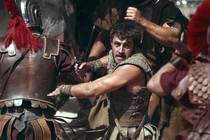Five minutes of common sense Western painting art
4 min read
Basic overview.Classical and anti – classical are two main streams of western traditional painting art. The classical taste attaches more importance to reason, especially in the form of sketch and despise color; Anticlassicism is passionate and emotional. Unlike classicism, which pursues solemn, quiet, simple and harmonious classical connotations, it emphasizes the spirit of freedom and indulgence, rich and spectacular momentum, and the spirit of turbulence and agitation.
Another characteristic of Western traditional painting is the emphasis on description. Painters have long regarded it as their task to effectively represent stories and legends, depict specific plots, and express certain allegories or symbols.
Development course.
1. Primitive Times.
In the last 5,000 years of the Paleolithic Age, during the Mogedlin culture, 17,000 to 12,000 years ago, a large number of paintings were painted on the primitive cave walls. They are dramatic, lifelike and masterpieces of naturalism. The paintings of the Lascaux caves in France and the Altamira caves in Spain are outstanding examples.
Lascaux Caves in France.
The Altamira Caves in Spain.
(2) Ancient Greece and Rome.
Without Greek art and science, without slavery there would be no Roman Empire; Without Greek culture and the Roman Empire, there would be no Europe today (Engels). Due to war and natural reasons, there was no pure Greek painting left, and the only material came from “Greek bottle painting”, the two pursuits of Greek art, one is true representation, the other is elegant and harmonious. The knowledge of Roman painting mainly comes from Pompeii.
Greek bottle painting.
3. The Middle Ages.
The Middle Ages (476-15th centuries) was a long period between the end and revival of classical civilization. Since Christianity was dominant in the Middle Ages, pictures also served it. It includes five parts:
1. Early Christian paintings (2-5 centuries);
2. Byzantine painting (5th — 15th centuries);
3. Barbarian and Carolingian Renaissance;
4. Romanesque (10th-12th century);
5. Gothic (12th-15th centuries).
(4) The Renaissance.
Italy is the center of the Renaissance. From the end of the 15th century to the middle of the 16th century, there were Da Vinci, Michelangelo and Rafael.
Leonardo Da Vinci.
Michelangelo.
Lafell.
(5) The 17th — 18th centuries.
Western painting in the 17th century opened up a new dynamic situation. Represented by Italy, Deranders, the Netherlands, Spain and France. Generally, it can be divided into three types:
1. Baroque: strong dynamic force, drama, contrast of light and shadow and space illusion;
2. Classicism and academism: Classicism emphasizes the expression of reason, form and type, and ignores the expression of the artist’s spirituality, sensibility and interest;
3. Realism: Refusing to follow the norms of classical art and “ideal beauty”, and unwilling to beautify nature, that is, to depict nature faithfully.
4, Rococo style: gorgeous, delicate, the pursuit of elegance, rare, light Yan, delicate sensory pleasure.
(6) The 19th Century.
At this time French painting was playing a dominant role in Europe. The development of French painting can be roughly divided into neoclassicism, Romanticism, realism, impressionism, new impressionism and post-impressionism.
Impressionist representatives include Monet, Manet, Pissarro, Renoir, Sisley, Degas, Corot, Morisot, Bazillo, etc.
7. The 20th Century.
At this time, there were a lot of modernist trends of thought, and the theory and concept of art diverged from the traditional painting.
Its main schools are: Brutalism, Cubism, Paris School, Expressionism, Futurism, Vienna sectionalism, Styleism, Dada, metaphysical painting, Surrealism, supremacist, abstract Expressionism, spectral art, light effect, New Surrealism, super realism.
Famous painter and his representative works.
(1) Leonardo Da Vinci.
Italian Renaissance painter, natural scientist, engineer, and Michelangelo, Raphael and said “after the Renaissance of the three masters” (also known as the “three masters of art”).
Masterpieces: Mona Lisa, The Last Supper.
(2) Vincent Wilhelm Van Gogh.
Dutch post-Impressionist painter.
His representative works include Starry Night, Rye Crows, self-portrait series and Sunflower series.
(3) Tintoretto.
He was a famous painter of the Venetian School in 16th century Italy.
Representative works: “The Punishment of Christ”, “Susanna in the Bath”.
(4) Pablo Picasso.
Spanish painter, sculptor, founder of modern art, the main representative of western modern painting.
Representative works: “Guernica”, “Dove of Peace”, “Maid of Avignon”, “Life”.
(v) Ilya Efimovich Repin.
The outstanding Russian critical realist painter.
Representative works: “The Bridge Man on the Volga River”, “Propagandist Arrested”.
Oscar – Claude Monet.
French painter, known as the “leader of Impressionism”, is one of the representatives and founders of Impressionism.
Representative works: Impression of Sunrise, Lady in Green — Kamei, Water Lily
(7) Michelangelo Bonarrotti.
Italian Renaissance painter, sculptor, architect and poet, Renaissance sculpture art peak representative, together with Raphael Sanci and Da Vinci known as the Renaissance of the three masters.
Representative works: David, Genesis.
(8) Raphael Sancy.
A famous Italian painter, he was also the youngest of the “Three Masters of the Renaissance”, representing the peak of the Renaissance artists engaged in the cause of ideal beauty.
Representative works: Sistine Madonna, The School of Athens.






